It was also at the tail end of the 1960s that South Korea’s National Museum of Modern and Contemporary Art premiered in the palace grounds of Seoul’s Gyeonbokgung.
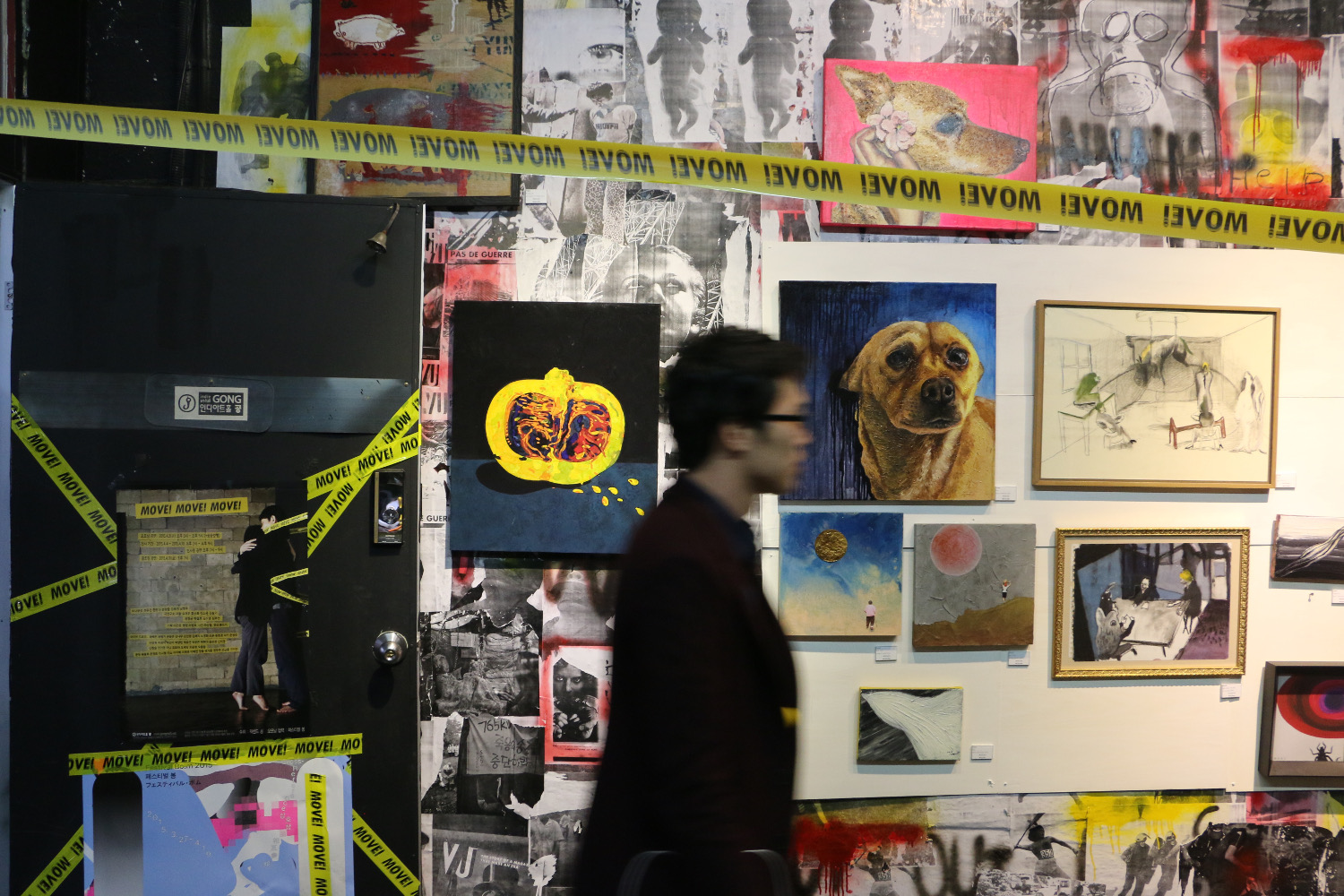
Nearly half a century later, the capital’s contemporary art scene continues to evolve in fascinating ways, bursting out beyond traditional galleries into reimagined spaces including office blocks, factories and the city’s streets. Here's how to get under the skin of this flourishing art scene and uncover some of South Korea's best kept artistic secrets.
The first stop on any contemporary art tour of South Korea should be the National Museum of Modern and Contemporary Art. In 1985, this veritable institution relocated to Gwacheon just south of Seoul and remains the principal home of its collection of over 6500 pieces. Here you can view one of Paik’s most iconic works: The More the Better, an 18.5m tower of 1,003 television monitors flickering with myriad video images.
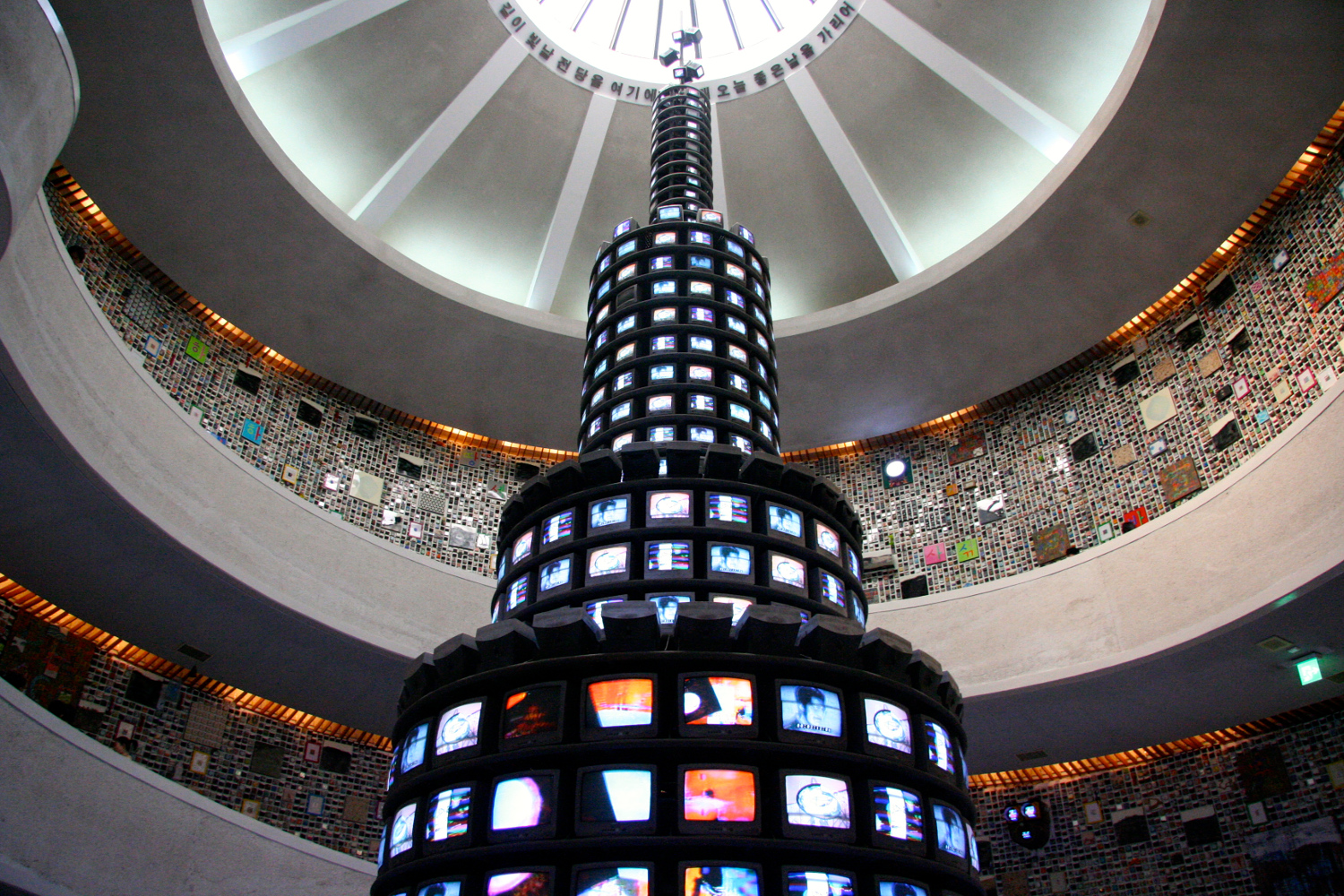
In 2014, the museum’s newest branch, MMCA Seoul, debuted back in central Seoul, opposite its former home in Gyeongbokgung. The opening show was Home Within Home Within Home Within Home by Suh Do Ho who has represented South Korea at the Venice Biennale and is best known for his site-specific installations, including meticulous recreations of buildings from translucent fabric. The gallery complex includes the former Defence Security Command building, a striking art deco structure. On the ground floor are the five display spaces of Gallery Art Zone, each highlighting facets of Korean art and design, including fashion, ceramics and prints – everything is for sale.
A short stroll across Bukchon will bring you to another fascinating new gallery, Arario Museum in SPACE, based in an iconic brick building from the 1970s that’s covered in ivy. The former offices of the SPACE architecture practice are now used to display gems from the 3700-piece collection of Arario’s owner, Korean business magnate Kim Chang-il. With works ranging from local luminaries Nam June Paik and Lee Ufan to Young British Artists' Tracey Emin and Damien Hirst and Japanese artist Kohei Nawa, Kim’s collection is like a who’s who of the contemporary scene. In contrast to the usual glacial white cube galleries, the building’s intimate, low-ceiling spaces help visitors focus on individual pieces of work, while the maze-like layout provides surprises around each corner.
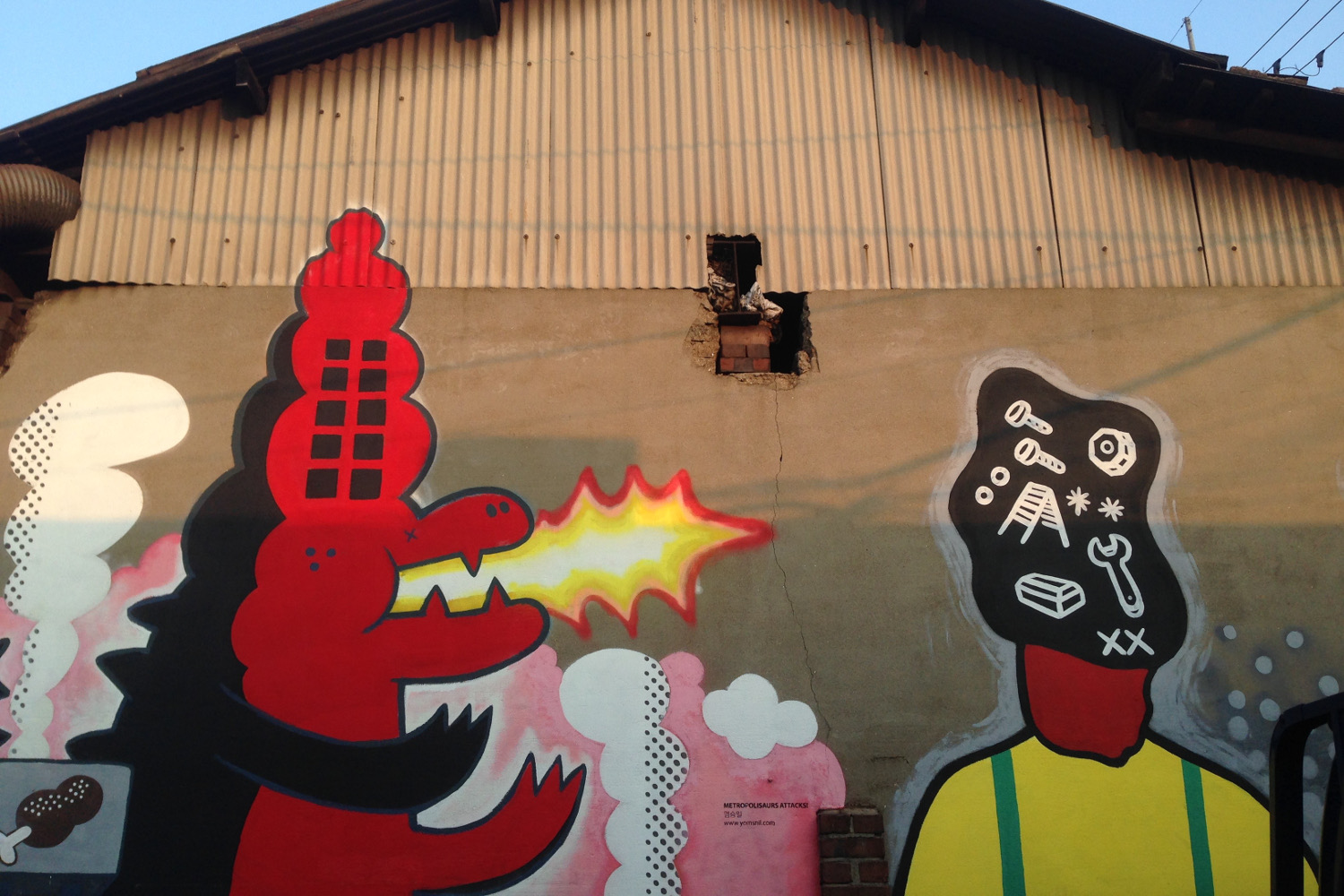
To really get a feel for Seoul's most thrilling artworks, you have to get outside of the museums and onto the city's streets. A new wave of local artists have been fostered through the Seoul Art Space project, which has 15 creative hot spots around the city. Projects vary from galleries and studios in the underground shopping arcades at Jungang Market in Sindang, to support for the influx of artists and designers to Mullae, an urban enclave of metal workshops and light industry.
Mullae Arts Village is also one of several locations where you can tap into Seoul’s dynamic street art scene. The backstreets and alleys of Hongdae, the area surrounding Hongik University – the city’s premier arts university – have long been brightly painted with cool stencils, murals, graffiti and paste-ups. Similar street art districts, now dedicated mural villages, have popped up at the HBC Art Village (in Haebangcho) and Ihwa Maeul on the slopes of Naksan.
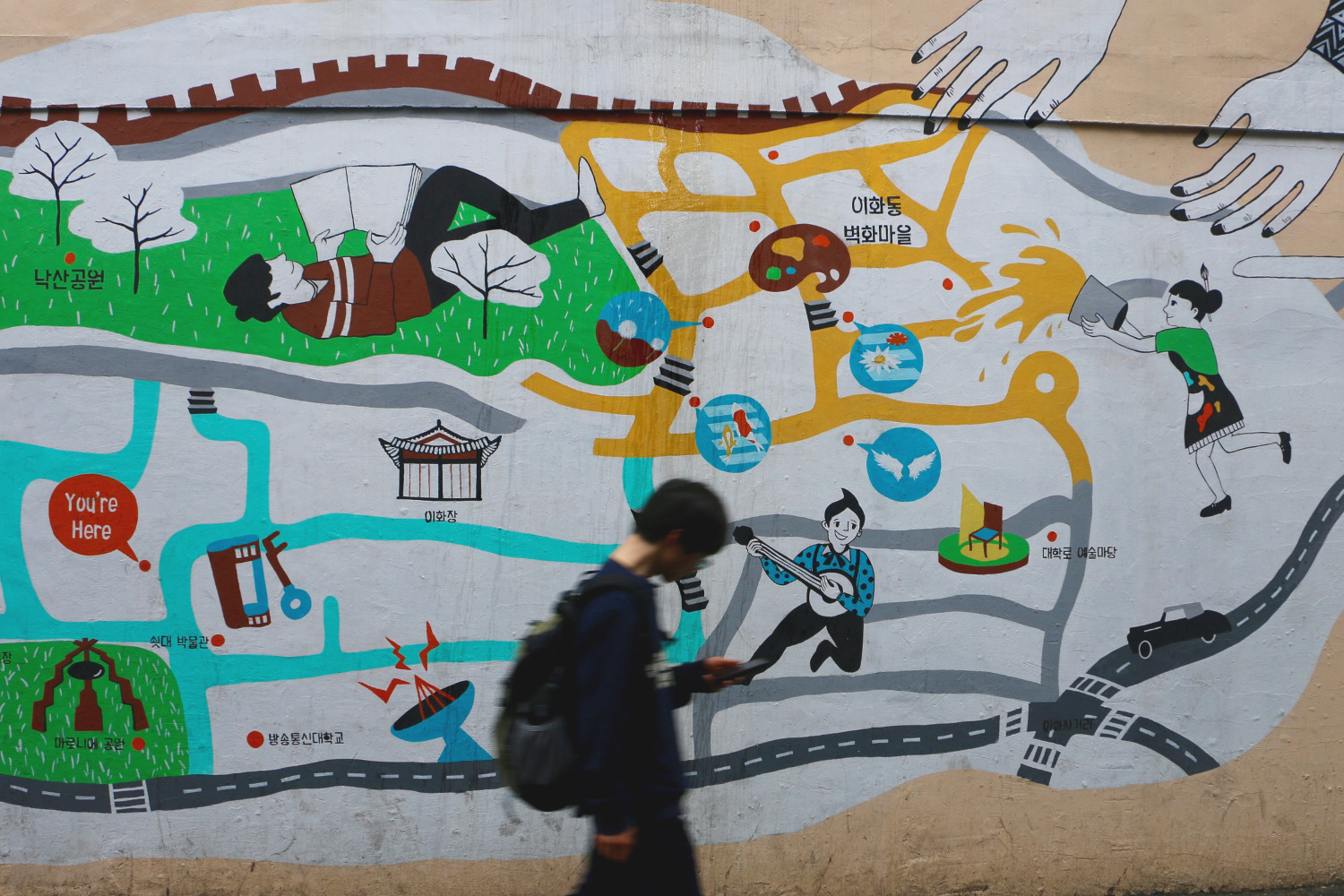
By its nature street art comes and goes, but the myriad contemporary sculptures on Seoul’s streets are more permanent. Their profuse presence is down to a law dating back to the 1988 Olympics that mandated owners of new buildings earmark 0.7% of the construction cost to artworks for public view. The results include such giants as Jonathan Borofsky’s 22m-tall kinetic Hammering Man opposite Seoul Museum of History; Claes Oldenburg and Coosje van Bruggen’s Spring, an enormous pink and blue swirly shell by the Cheong-gye-cheon; and the exuberant steel mirrored bubbles of Anish Kapoors’ Tall Tree and Eye outside the Leeum Samsung Museum of Art, a gallery that is also one of the best places to view contemporary art in Seoul.
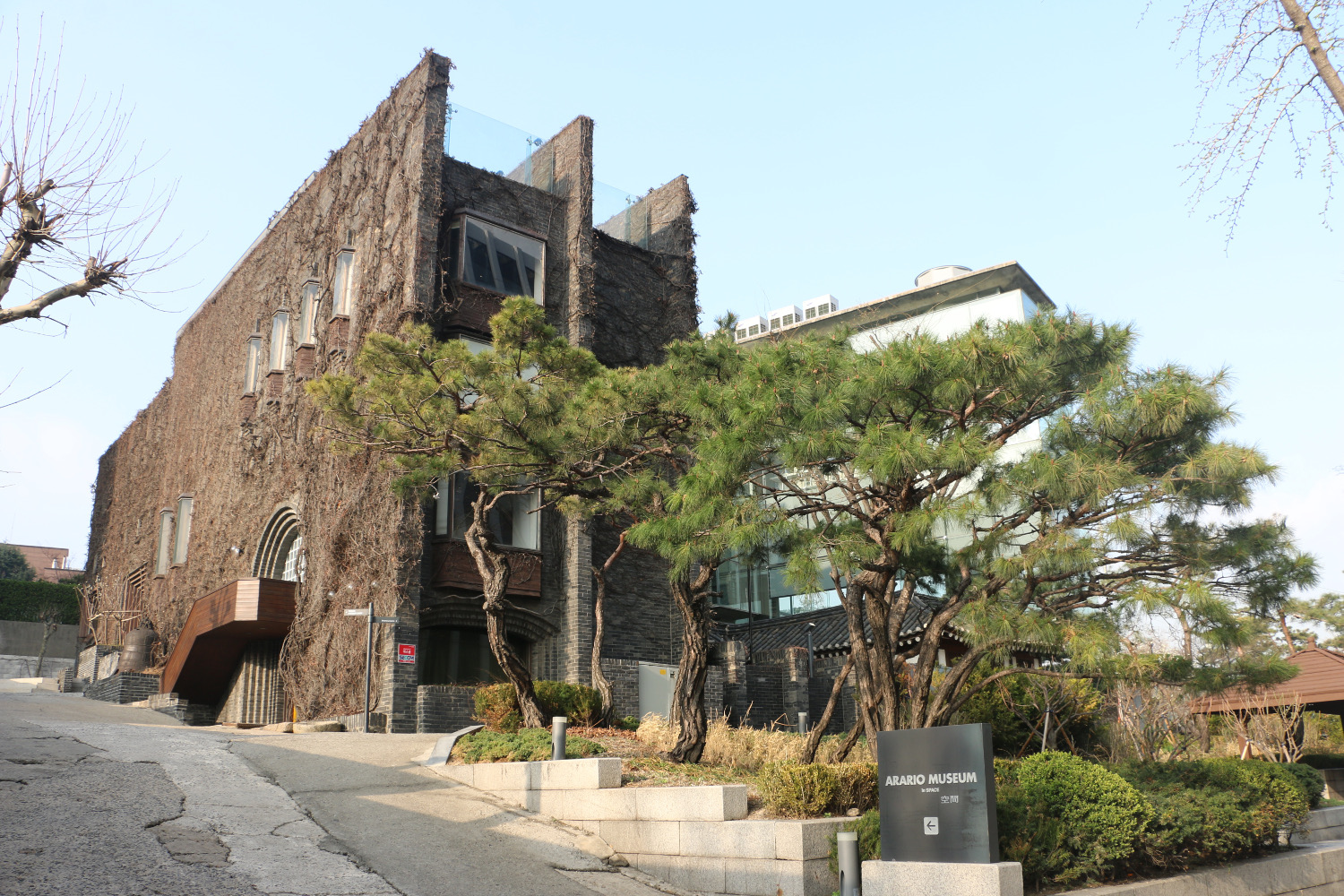
Arario also has a commercial gallery adjacent to MMCA Seoul and a string of other commercial galleries along Samcheong-ro. All host regularly changing free exhibitions of both local and international artists. The most venerable is Gallery Hyundai, the first to open here back in 1970, a time when many of the artists it represents – including Lee Joong-seop, Nam June Paik (both now deceased), Chang-yeol Kim and Dae-won Lee – were nowhere near as famous as they are today. Hyundai remains a gallery in which to sample creations by the established and up-and-coming and hosts shows in two exhibition spaces along Samcheong-dong-ro.
Another gallery, Hakgojae, made its name back in the late 1980s by exhibiting so called 'Minjung art': works that challenged the draconian military dictatorship running South Korea at that time. Living up to its Confucian credo of 'reviewing the old to learn the new’, Hakgojae’s gallery space is partly inside a converted hanok, a traditional Korean wooden residence. Look to the roof of the contemporary extension and you’ll see Lee Yongbaek’s Pieta: Self-death, a striking figurative sculpture that was part of the artist’s show at Venice Art Biennale in 2011. Next door, Kukje is another gallery that has hosted works by the likes of Damien Hirst, Anish Kapoor and Bill Viola; its restaurant features a running woman sculpture by Jonathan Borofsky.
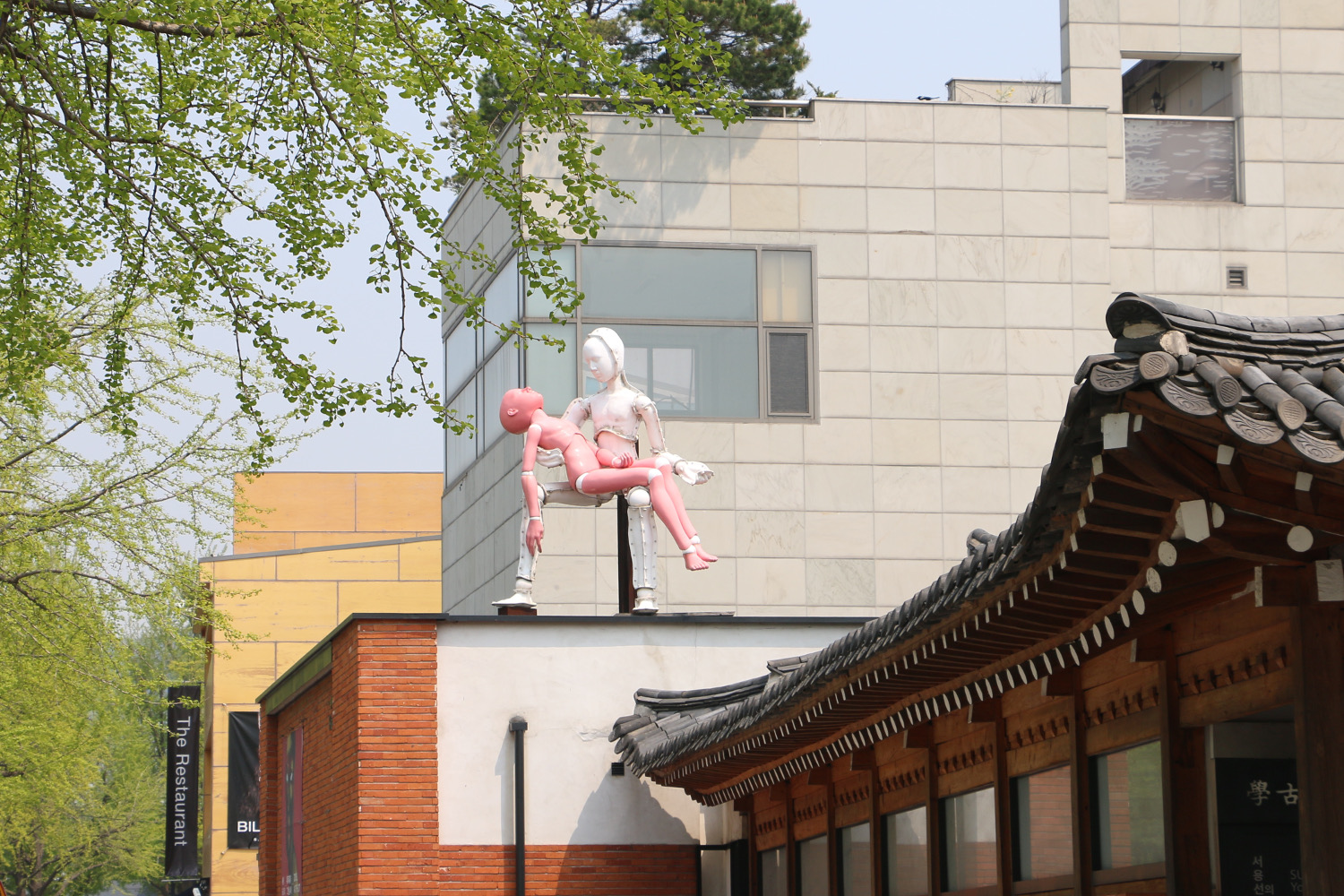
Tongui-dong, to the west of Gyeongbukgong, has a gallery scene that was pioneered in the 1970s by Jean Art Gallery. Standing in the gallery’s redbrick courtyard is a 2m-tall yellow and black polka-dotted pumpkin, a signature creation by Japanese pop artist Yayoi Kusama. There are plenty of Kusama-designed items on sale in its gift shop, as well as ones by fellow Japanese Naru Yoshitomo and contemporary Korean artists.
Further down the street, is Artside, which established its reputation by introducing avant-garde Chinese artists, like Yue Minjun and Zeng Fanzhi, to South Korea. Pick your way through the backstreets to find the cute hanok-based gallery Ryugaheon. Its main focus is photography, but not exclusively so; at a recent show the works shown were delicate embroideries of flowers.
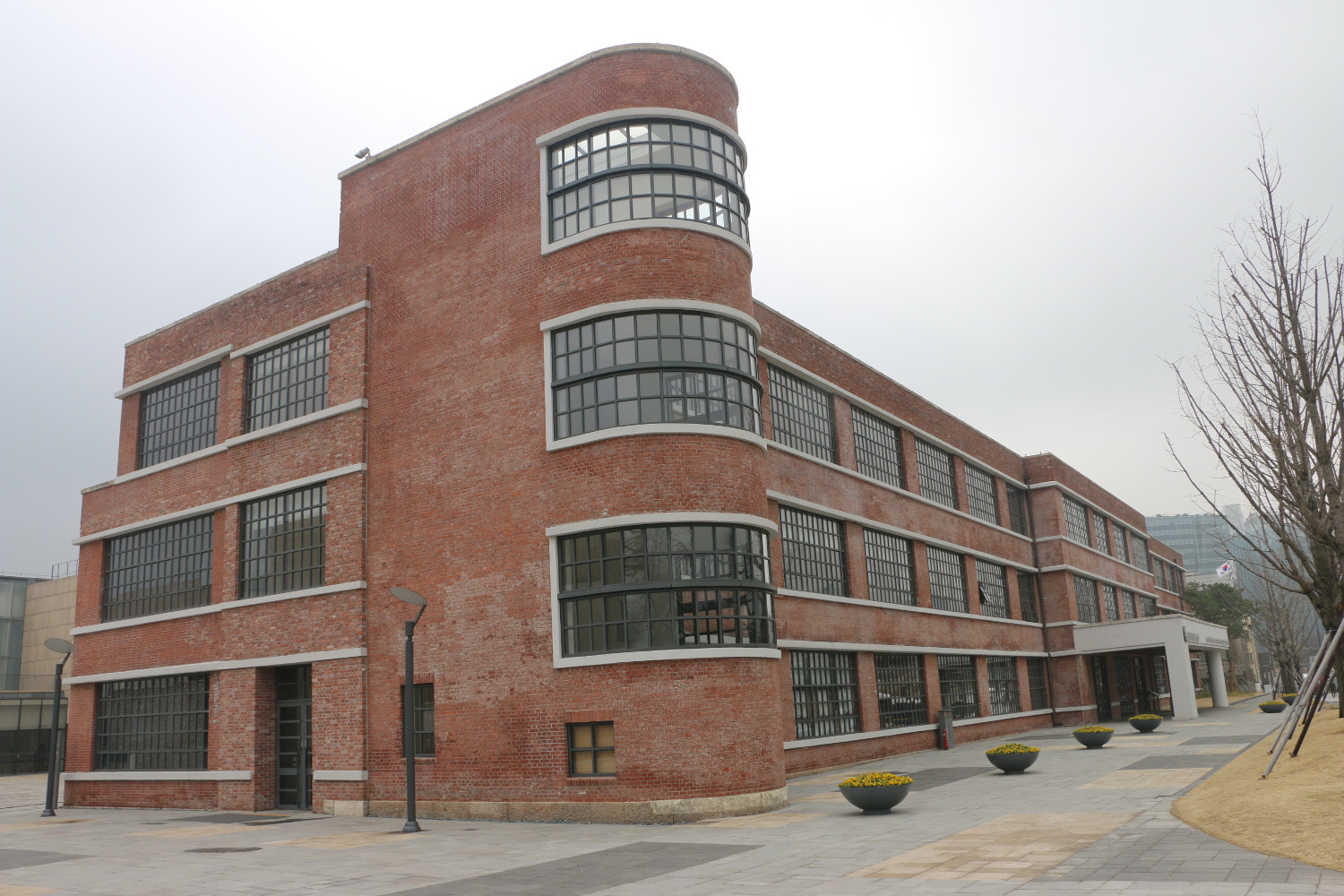
Seoul wouldn't be Seoul if it wasn’t also pushing the boundaries of what defines contemporary art. At the cutting edge is the unique style dawon – literally 'miscellaneous arts'– which includes genre-bending, often participatory works that tend to take place in unconventional venues. This amorphous form was given its name by Korea’s Arts Council in 2005 as a framework for art that didn't fit into an existing context.
For an in on this lively scene, check out the monthly shows of Crazy Multiply combining music, art, and performance art; and the annual Festival Bo:m, running from late March to early April, which showcases dance, theatre, art, music and film in venues like Indie Art-Hall Gong, a large-events space in a still-operating steel products factory.